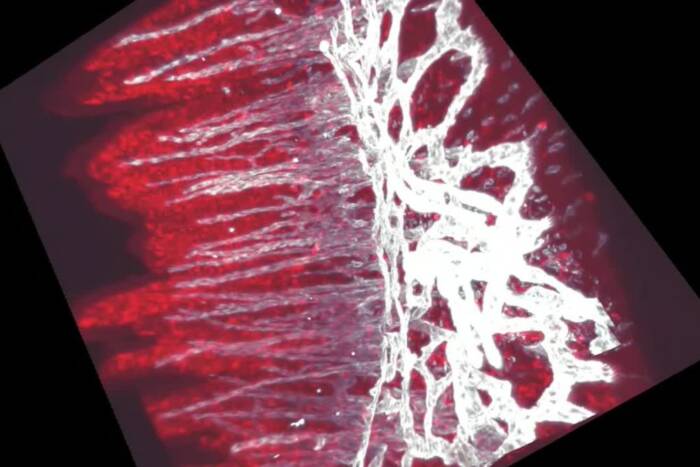Tom Muir to leave Rockefeller for Princeton
by JOSEPH BONNER
Tom W. Muir, a chemist who studies molecular recognition in cellular signal transduction, has been appointed the Van Zandt Williams, Jr. Class of 1965 Professor in Chemistry at Princeton University. Dr. Muir is currently dividing his time between the Upper East Side and Princeton as he sets up a new lab and winds down operations in Smith Hall, and will formally move to Princeton in April.
Dr. Muir joined Rockefeller in 1996 as assistant professor and head of laboratory. He was named associate professor in 2000, professor in 2002 and Richard E. Salomon Family Professor in 2005. He is head of the Selma and Lawrence Ruben Laboratory of Synthetic Protein Chemistry and director of the Pels Family Center for Biochemistry and Structural Biology at Rockefeller.
Dr. Muir investigates the physicochemical basis of protein function in complex systems of biomedical interest. By combining tools of organic chemistry, biochemistry and cell biology, his research has led to the development of new technologies that provide fundamental insight into how proteins work.
Dr. Muir and his colleagues use novel techniques to study molecular recognition in prokaryotic and eukaryotic signal transduction. One of these techniques is a general approach to investigating protein activity called expressed protein ligation, which allows synthetic peptides and recombinant proteins to be chemoselectively linked together. This is done by introducing molecular “sticky ends,” which act like Velcro, to the complementary ends of the proteins, causing them to react when mixed together in water. Introduction of these sticky ends can either be achieved chemically or biosynthetically, and it is possible to append the synthetic molecule at either end of the recombinant protein, or even in the middle.
The technology opens up proteins to the tools of organic chemistry by allowing researchers to incorporate unnatural amino acids, posttranslational modifications and isotopic probes into specific protein sites. In collaboration with scientists in other Rockefeller labs, Dr. Muir is currently using expressed protein ligation to study how histone modifications control the local structure and activity of chromatin and potassium channel selectivity.
“The move to Princeton will allow me to reconnect with my roots in the physical sciences and will hopefully provide new opportunities to apply both established and emerging methods in physical and organic chemistry to the various biological areas my laboratory is interested in,” says Dr. Muir. “I am also excited to play a role in the major building effort under way in chemistry at Princeton. The opportunity to help shape the direction of chemical biology at this institution is truly appealing to me.”
Dr. Muir has received the Blavatnik Award for Young Scientists, the Vincent du Vigneaud Award from the American Peptide Society for excellence in peptide research and Rockefeller University’s Distinguished Teaching Award, among other honors. He served as a junior and tenured member of the university’s Academic Council, and also as chairman of the faculty search committee from 2009 to 2011.
“Rockefeller is a truly magical place to conduct biomedical research,” Dr. Muir says. “I have always felt like I was at science camp for professional researchers — it’s just been great fun. Leaving Rockefeller, with its great tradition in peptide and protein chemistry, was as hard a professional decision as I will likely ever make. Certainly, I leave a part of myself here and hope that in the years to come I will have the opportunity to visit and interact with the many inspirational scientists I have been privileged to know and befriend here.”


